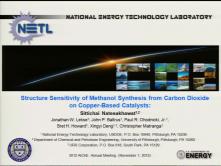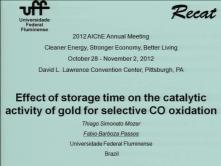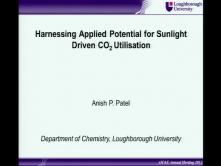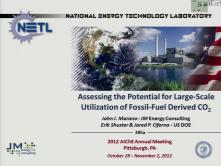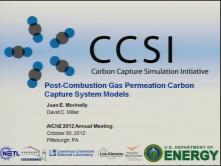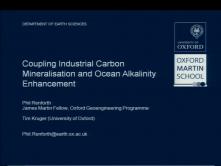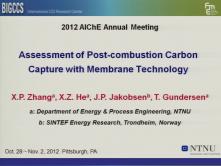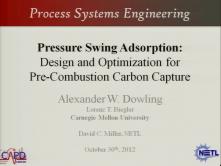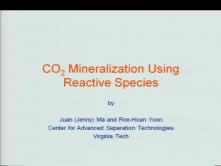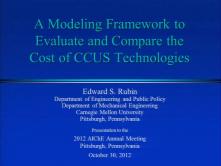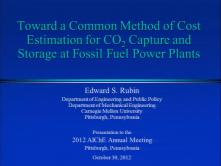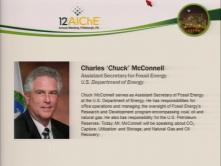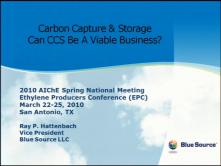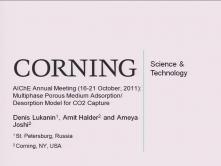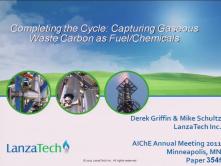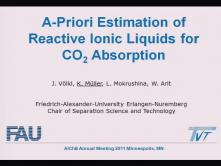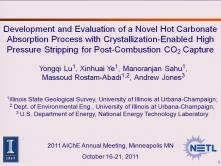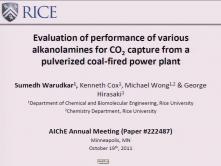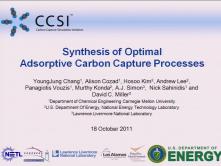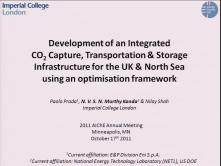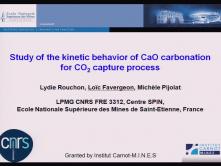Webinars & Conference Presentations
Post-Combustion Gas Permeation Carbon Capture System Models
Juan E. Morinelly, David C. Miller
National Energy Technology Laboratory (NETL)
Gas permeation membranes have been proposed as an alternative to amine
Introduction
The ocean carbonate system has the potential to store ~102 - 103 billions of tonnes of CO2as a stable bicarbonate solution. Some
...Read morePressure Swing Adsorption (PSA) is an efficient method for gas separation, and is a potential candidate for carbon dioxide (CO2) capture from power plants. However, few PSA cycles have been designed for this purpose and the optimization of PSA systems for CO
...Read moreWhile geologic sequestration method may be used to store large volumes of CO2, it involves two distinct steps, i.e., capture and storage, with the former being a more costly step. Also, finding suitable storage
...Read moreCarbon capture and storage (CCS) has been characterized as the technology that can jump start mitigation of greenhouse gases until new, less carbon intensive technology can be implemented to provide electrical power, transportation fuels and energy our society needs to stay competitive in the...Read more
Multiphase porous medium adsorption/desorption model for CO2 capture applications
Denis Lukanin1*, Amit Halder2, and Ameya Joshi2
1Corning Science Center, Corning SNG, St.Petersburg (Russia)
2Modeling
...Read moreAICHE ABSTRACT
CO2 Separation from Coal-Fired Power Plants by Regenerable Mg(OH)2 Solutions
Hari K. Bharadwaj†, Joo-Youp Lee† *, Xiang Zhou‡, Lei Cheng‡, Tim C. Keener‡
...Read moreThe world currently faces an enormous energy challenge. LanzaTech responds to this challenge by capturing and beneficially reusing waste carbon to make low carbon fuels and chemicals. The International Energy Outlook, in its 2010 reference case, projects that world primary...Read more
The separation of CO2 is an important topic in thermal separation science. The scrubbing of carbon dioxide from exhaust gases has gained more interest in the last years to reduce the emissions of green for counteracting global warming but is also an important...Read more
A novel Integrated Vacuum Carbonate Absorption Process (IVCAP) for post-combustion CO2 capture is being developed at the University of Illinois at Urbana-Champaign. A key technical aspect of this process is to employ a biocatalyst, carbonic anhydrase (CA...Read more
Solid sorbent carbon capture systems have the potential to require significantly lower regeneration energy compared to aqueous monoethanol amine (MEA) systems. To date, the majority of work on solid sorbents has focused on developing the sorbent materials themselves. In...Read more
Carbon Capture and Storage (CCS) is widely regarded as an effective medium-term CO2 abatement technology. However, high cost of the capture technologies, at their current state of the art, and the huge upfront costs of the CO2 transport pipelines and...Read more
Anthropogenic carbon dioxide (CO2) emissions, major contributors to the greenhouse effect, are considered as the main cause of global warming. So, decrease of CO2 emitted by large industrial combustion sources or power plants, is an important...Read more

